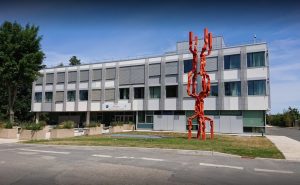Valentin Iovene will defend his PhD thesis in the Gilles Kahn room of Inria Saclay’s Alan Turing building, at 3PM on November 23rd.
The thesis is entitled
Answering Meta-Analytic Questions on Heterogeneous and Uncertain Neuroscientific Data with Probabilistic Logic Programming
This work was done under the supervision of Dr. Demian Wassermann within the Parietal team.
Members of the jury
- Pr. Pierre Senellart, referee, professor and deputy director of the Département d’Informatique de l’ENS (DI ENS)
- Dr. Roberto Toro, referee, researcher and group leader at Institut Pasteur
- Dr. Sarah Genon, examinator, head of the Cognitive NeuroInformatics group of Forschungszentrum Jülich
- Dr. Vanina Martinez, examinator, researcher at Department of Computer Science Universidad de Buenos Aires, Argentina
- Dr. Pierre Bourhis, examinator, Chargé de Recherche au CNRS à CRIStAL dans l’equipe SPIRALS
- Dr. Bertrand Thirion, examinator, leader of the Parietal team of Inria
- Dr. Demian Wassermann, supervisor, associate research professor within the Parietal team of Inria
Abstract of the thesis
This thesis contributes to the development of a probabilistic logic programming language specific to the domain of cognitive neuroscience, coined NeuroLang, and presents some of its applications to the meta-analysis of the functional brain mapping literature. By relying on logic formalisms such as datalog, and their probabilistic extensions, we show how NeuroLang makes it possible to combine uncertain and heterogeneous data to formulate rich meta-analytic hypotheses. We encode the Neurosynth database into a NeuroLang program and formulate probabilistic logic queries resulting in term-association brain maps and coactivation brain maps similar to those obtained with existing tools, and highlighting existing brain networks. We prove the correctness of our model by using the joint probability distribution defined by the Bayesian network translation of probabilistic logic programs, showing that queries lead to the same estimations as Neurosynth. Then, we show that modeling term-to-study associations probabilistically based on term frequency-document inverse frequency (TF-IDF) measures results in better accuracy on simulated data, and a better consistency on real data, for two-term conjunctive queries on smaller sample sizes. Finally, we use NeuroLang to formulate and test concrete functional brain mapping hypotheses, reproducing past results. By solving segregation logic queries combining the Neurosynth database, topic models, and the data-driven functional atlas DiFuMo, we find supporting evidence of the existence of an heterogeneous organisation of the frontoparietal control network (FPCN), and find supporting evidence that the subregion of the fusiform gyrus called visual word form area (VWFA) is recruited within attentional tasks, on top of language-related cognitive tasks.


